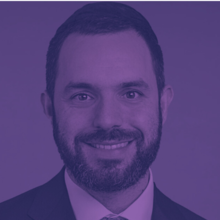Overview of the Diagnosis and Management of Atrial Fibrillation
This lecture will provide in-depth information on the diagnosis and management of atrial fibrillation.
Course curriculum
-
-
Video Course
-
-
-
Evaluation
-

Course Details
- $18.00
- 1 hour of video content
- Presented by Alexander Kushnir MD, PhD
About the course
1.0 contact hour (0.25 RX credit)
Expiration date: October 17, 2027
This lecture will provide in-depth information on the diagnosis and management of atrial fibrillation:
Electrophysiology; overview of electrical activity in the heart
AV node involvement in atrial fibrillation
EKG rhythm strip and heart rate evaluation
Types of atrial fibrillation
Signs and symptoms
Complications: clots, stroke
Diagnosis of atrial fibrillation
Self monitoring devices
Management: pharmacological methods, implanted devices, and ablation
Learning Outcome
The learner will report this educational activity provides information that improves, supports, or causes a change in their practice.
This nursing continuing professional development activity was approved by the Northeast Multistate Division Education Unit, an accredited approver by the American Nurses Credentialing Center’s Commission on Accreditation.
To obtain CE credits, learners must complete 90% of the lecture. Partial credit will not be granted. Learners will receive a CE certificate upon completion of the lecture and submission of a course evaluation form.
Commercial Support
There is no commercial support for this lecture.
Conflict of Interest
The presenter declares no conflicts of interest.
Instructor

